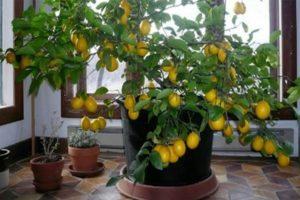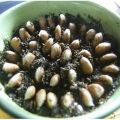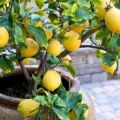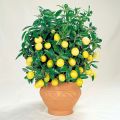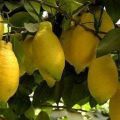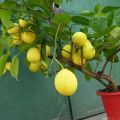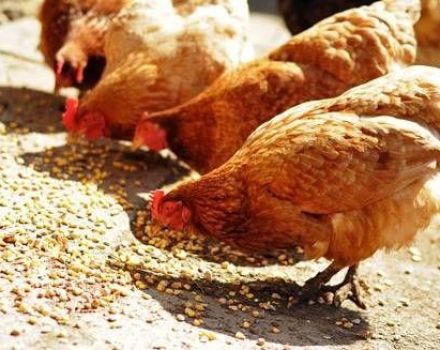Description of Meyer's lemon and features of home care
The Meyer lemon variety produces fruits with an unusual aroma several times a year. The peculiarity of this culture is that hybridization took place in vivo. The variety is based on lemon and orange, thanks to which the fruits of the plant differ from the usual ones in color, taste, number of seeds and other characteristics. In its modern form, Meyer turned out thanks to Chinese gardeners.
Description and characteristics of Meyer's homemade lemon
Meyer's lemon is suitable for home growing. The popularity of this culture was due to the compact crown and early fruiting.The first lemons ripen on a seed-grown tree in the fourth or fifth year after planting, a record among citrus fruits.
Meyer's lemon grows no more than 2 meters in height. The crown of the tree is dense, with bright green leaves that emit a pleasant smell. The aroma is also exuded by the white flowers.
The fruits of the tree are small in size and compact on the branches.
Pros and cons of the variety
Meyer's merits include the following:
- high adaptability to new growing conditions;
- ability to withstand low temperatures;
- good taste of fruits;
- long and frequent fruiting.
Of the disadvantages of lemon, demanding care is distinguished. Failure to comply with the rules of cultivation leads to the rapid death of the tree. Meyer's fruits are not suitable for long-term storage.
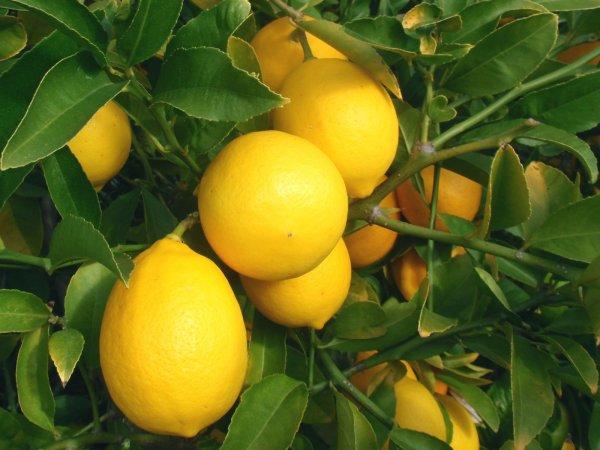
Reproduction methods
This culture is propagated using seeds or by cuttings. The latter option is preferable, since it often allows you to grow a fruiting tree.
Using seeds
Reproduction in this way is carried out as follows:
- seeds are pre-washed and dried;
- prepared seeds are laid out on moistened gauze and hidden in a box;
- after the first shoots appear, the plant is planted in prepared soil.
Gauze, before the first shoots appear, must be constantly moistened. After planting, the plant is recommended to be watered every two days. When the trunk of the tree reaches 8 millimeters in diameter, the plant twists.

By cuttings
This breeding method involves performing the following actions:
- a shoot with five leaves is cut from the tree, which is then placed in a weak solution of manganese for 20 hours;
- at the cut point, the stalk is processed with a sharp knife;
- with the exception of the top three, all leaves are removed;
- the prepared shoot is planted in a pot with drainage and soil and covered with plastic wrap (glass).
The shoot pot should be placed in an area where diffused sunlight falls. After 2-3 weeks, you can remove the polyethylene, first for 2 hours, and then gradually increasing the interval.

Landing rules
Young plants are recommended to be planted in a soil mixture obtained from sand, leafy earth, humus and sod (proportions, respectively, 1: 1: 1: 2). A similar substrate is prepared for mature trees.
At the same time, it is recommended to add one part of clay and three parts of turf to the mixture, leaving the other ingredients in the indicated proportions.
The root collar of the plant should be placed at ground level. For the first 5 years, the lemon must be transplanted annually into a new larger container. In the future, this procedure must be repeated every 3 years. It is highly not recommended to immediately plant the tree in a large container. In this case, rotting of the root system is possible.
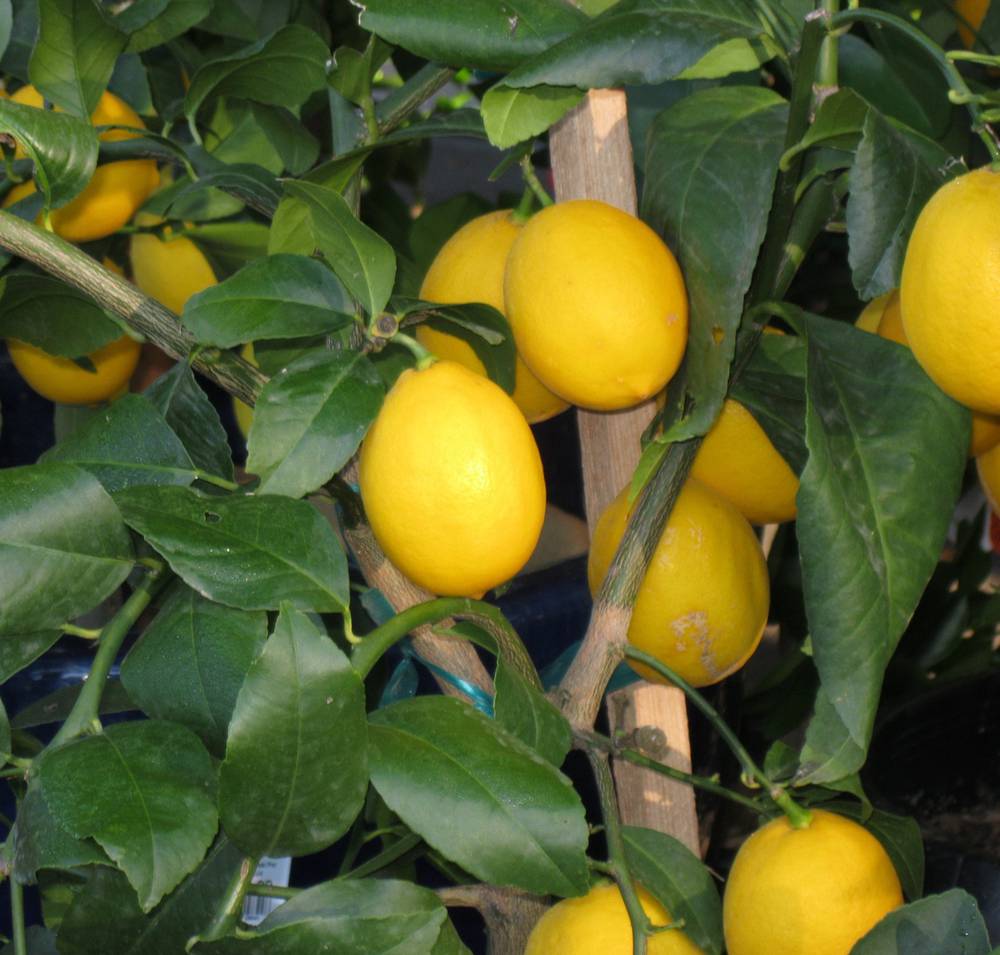
How to properly care for a plant?
Meyer's lemon bears fruit constantly, provided that the tree grows in conditions as close to natural as possible. This will require providing the desired level of illumination, temperature and regular watering.
Lighting, humidity and temperature
The plant bears fruit constantly, provided that sunlight falls on the leaves for 12 hours. Therefore, it is recommended to install a pot with a tree on the east or south window. In winter it is necessary to arrange artificial lighting.
Meyer's variety does not tolerate drafts and sudden temperature changes. During the summer season, the plant is recommended to be kept indoors at 20 degrees. In the cold season, the temperature in the room should be 12 degrees. The optimum humidity level is 65-70%. Therefore, the tree should be removed as far as possible from the batteries.
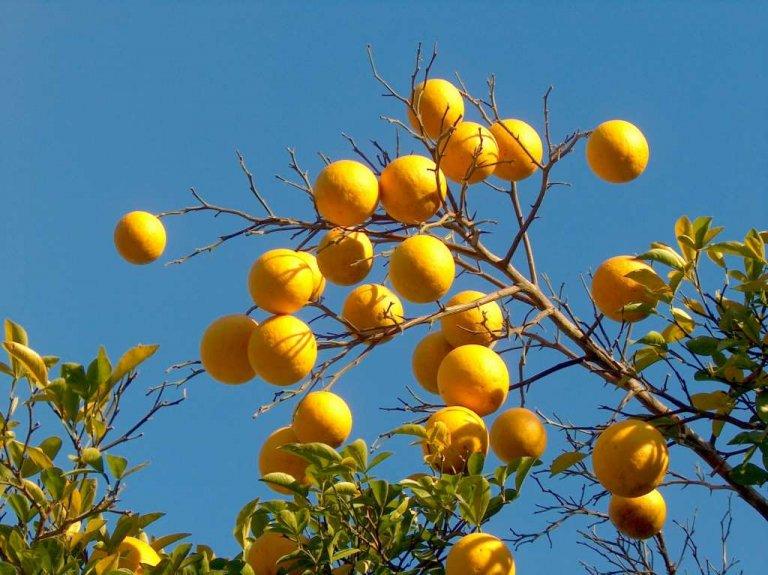
Watering and feeding
It is recommended to water the tree twice a week, regardless of the season. You also need to spray the leaves regularly. As a top dressing, a mixture is used, which includes potassium, phosphorus and nitrogen. Fertilizers should be applied weekly from March to September. In order for the lemon to get enough trace elements, every three months the tree is fed with a manganese solution.
Pruning rules
A large seedling is shortened to 20 centimeters. Developed buds should remain at the top, from which branches will appear later, forming the skeleton of the future crown. Of these shoots, 3-4 of the healthiest are then left. After that, the branches that form the skeleton are trimmed to 25 centimeters. Subsequent shoots are shortened to 10 centimeters. And the branches of the fourth order are cut to 5 centimeters.
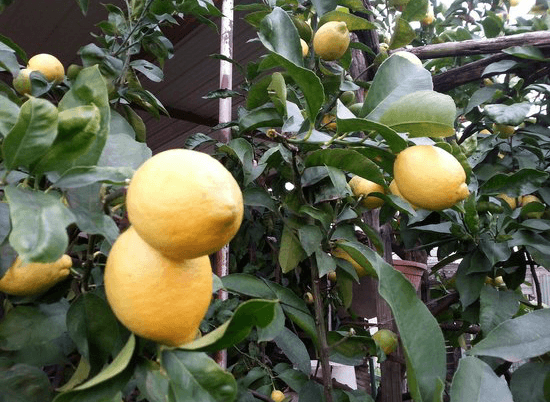
Protection against diseases and pests
Meyer's lemon is susceptible to scabbard and spider mite attacks. This plant is not susceptible to diseases. Treatment of lemon with a stream of water helps to get rid of spider mites, and a mixture of liquid soap and kerosene (proportion 2: 1) helps to get rid of the scabbard.
For prevention purposes, it is recommended to apply a solution of a liter of water, keltan and karbofos, taken in an amount of 2 grams, to the tree 2 times a year.
Harvesting and storage of crops
Meyer's fruits should be picked as they ripen. Lemons of this variety are not suitable for long-term storage.

